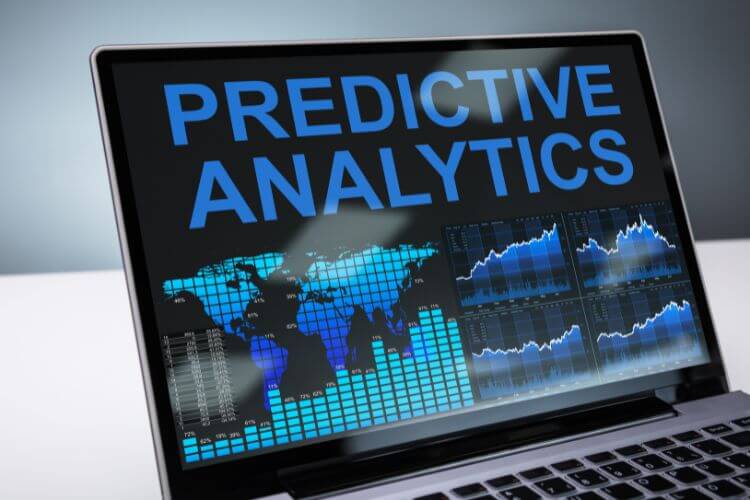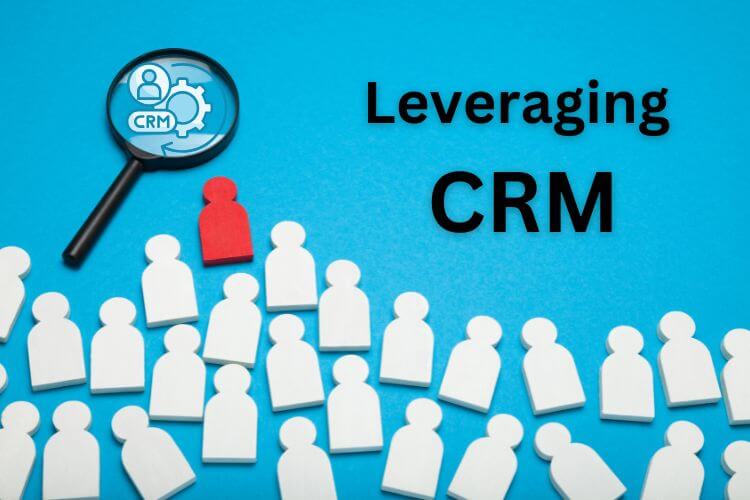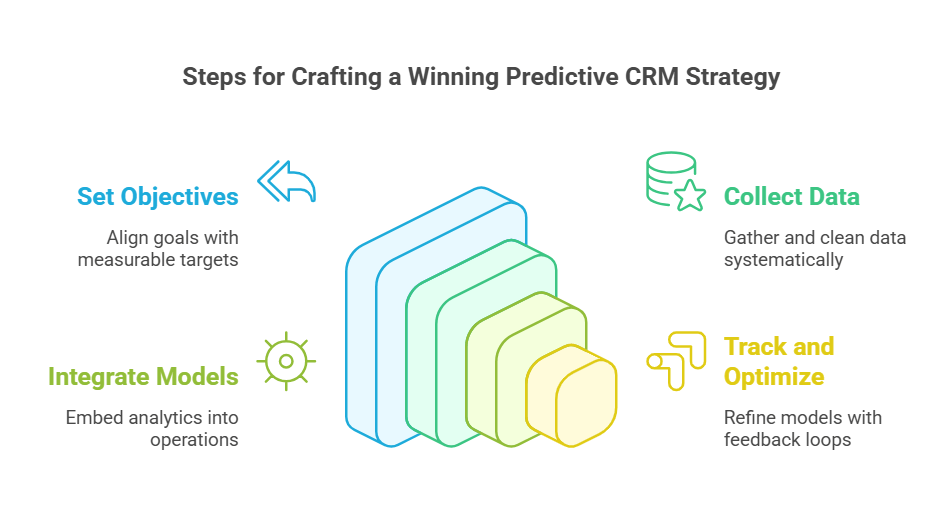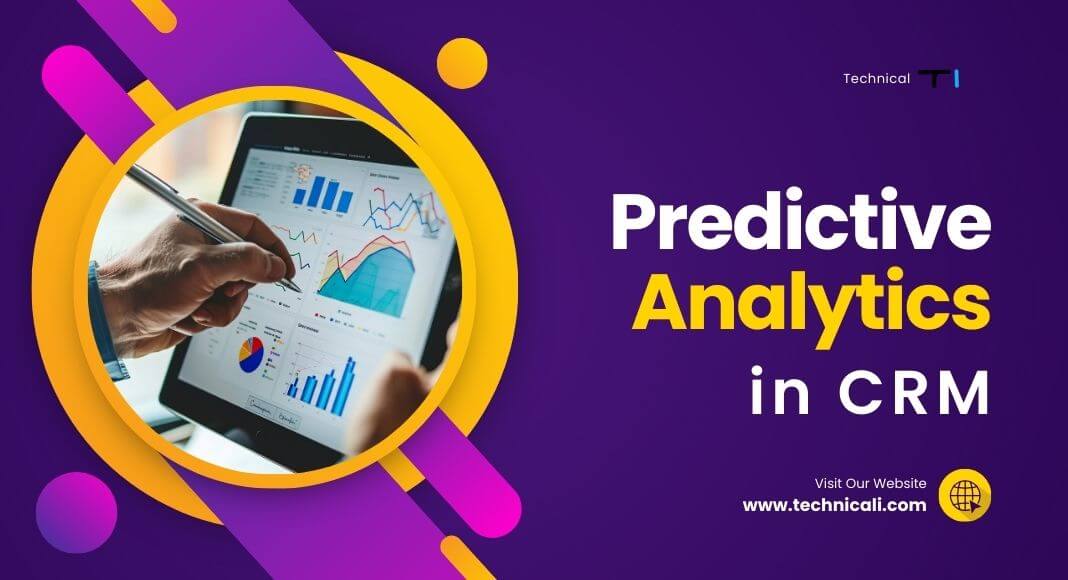In a rapidly evolving digital landscape, predictive methodologies are reshaping how organizations handle CRM and propel customer engagement to new heights. The capacity to forecast future behavior with precision, all while parsing massive streams of data, can feel both exhilarating and formidable. Yet, such an approach allows businesses to tap into a well of valuable insights, make data-driven decisions, and ultimately refine every facet of customer relationship management. Below, we explore how predictive analytics sits at the core of CRM predictive analytics efforts, driving business growth by synthesizing historical data into informed, actionable steps.
Contents
- 1 Introduction: Why Predictive Analytics Matters in CRM
- 2 Decoding the Basics Types of Predictive Analytics Models
- 3 Leveraging CRM Predictive Analytics to Improve Sales and Marketing Strategy
- 4 Implementing Predictive Analytics in Your CRM System: Best Practices
- 5 Real-World Examples: Predictive Analysis in Action
- 6 Actionable Steps for Crafting a Winning Predictive CRM Strategy
- 7 Conclusion
Introduction: Why Predictive Analytics Matters in CRM
The Shift Toward Data-Driven Customer Relationship Management
Modern CRM systems have transcended their original role as mere databases of names and contacts. They now function as dynamic ecosystems that gather, filter, and interpret colossal quantities of data, enabling organizations to predict future trends and better serve their customer base. Within sales and marketing spheres, such analytics efforts reveal untapped opportunities, from pinpointing promising leads to streamlining the entire sales process.
- Technicali Action Step: Embrace the essence of customer relationship management by prioritizing data capture and consolidation so you can forecast more accurately and analyze data across channels.
- Fact: The global predictive analytics market is estimated to be worth approximately $22.1–$22.3 billion in 2025.. Many companies now rely on machine learning algorithm frameworks to dissect customer data, predict future purchase patterns, and transform these patterns into powerful strategic advantages.
Understanding Predictive CRM and Its Benefits
Predictive analytics stands at the crossroads of CRM innovation, fueling CRM predictive analytics strategies that deliver robust customer satisfaction and sustained business growth. By detecting subtle behavior cues in large volumes of customer interactions, organizations can tweak campaigns, craft customized sales offers, and anticipate customer needs with uncanny accuracy.
- Technicali Action Step: Identify ways in which predictive analytics helps refine everything from lead scoring to retention initiatives, leading to higher customer engagement and loyalty.
- Example: Many organizations employ Salesforce CRM to harness analytics, which can also be used for forecasting churn risks and upsell potential, creating a ripple effect that enhances customer experience throughout the entire sales process.
Decoding the Basics Types of Predictive Analytics Models

Predictive Analytics Uses Historical Data
To truly appreciate predictive analytics, note how predictive analytics uses historical data to draw meaningful conclusions. Through techniques like regression analysis, one can discern patterns embedded in past customer interactions. In essence, predictive models anticipate emerging customer behavior, enabling organizations to forecast demand, refine resource allocation, and stay consistently ahead of market fluctuations.
- Technicali Action Step: Employ analytics tools, potentially offering regression or classification functionalities, to refine sales pipeline forecasting. Then, iterate, ensuring that each new wave of data fortifies your predictions.
Types of Predictive Techniques and Their Applications
- Regression and classification models to forecast customer needs, helping tailor products or services more effectively
- Time-series analysis for detecting cyclic patterns in historical data, which can illuminate future behavior and future outcomes
- Machine learning algorithm innovations that segment large volumes of customer data, enabling hyper-focused marketing efforts
How Predictive Analytics Models Enhance Customer Relationships
When integrated into a sales CRM, advanced analytics can improve customer retention by identifying users on the brink of churn and enabling a swift, proactive response. In this context, CRM predictive analytics reveals which touchpoints build loyalty and which detract from it.
- Example: A sales CRM can use predictive analytics to track user logins, transaction values, and content engagement, then personalize outreach for maximum resonance.
- Technicali Action Step: Deploy an effective CRM or a robust CRM solution to store and interpret customer data seamlessly, thereby accelerating the journey from raw data to actionable insight.
Leveraging CRM Predictive Analytics to Improve Sales and Marketing Strategy

Mapping the Sales Pipeline with Predictive Analytics Tools
Integrating predictive analytics tools with your CRM software is key to gleaning real-time snapshots of your pipeline. Through using Salesforce or other analytics software, you can watch each phase of the sales pipeline unfold and pivot swiftly if forecasts deviate from actual performance.
- Technicali Action Step: Build a predictive model dashboard that monitors sales revenue, sales targets, and lead quality in real-time. This approach ensures your team spots red flags early and seizes fresh opportunities immediately.
- Example: Organizations pairing Salesforce CRM with advanced marketing analytics often see a notable lift in customer satisfaction, leading to healthy margins and dependable business growth.
Personalizing Customer Experience for Higher Retention
Predictive analytics offers a window into genuine customer behavior. By examining user preferences, transaction histories, and usage metrics, you can effortlessly know your customers and personalize communications, product recommendations, or loyalty perks.
- Technicali Action Step: Leverage CRM data alongside data analysis methods to deliver more resonant messages. This fosters deeper customer engagement and cultivates repeat business.
- Fact: Brands that consistently tailor promotions and outreach have seen some companies see their lead conversion rates climb up to 30% after adding AI to their sales processes.
Aligning Sales and Marketing Teams Through Data Analysis
Collaboration among sales and marketing teams can supercharge results when united by valuable insights surfaced by predictive analytics. A shared data pool eliminates silos and empowers everyone to aim for unified success metrics.
- Analyze data from various channels, email, social media, and in-app interactions to gauge evolving trends.
- Identify patterns that influence forecast accuracy and adapt promptly.
- Make data-driven decisions regarding your products or services, boosting your overall strategic edge.
- Example: When you enable sales staff to refine prospecting tactics in tandem with marketing’s targeting cues, each side amplifies the other’s efforts, aided by predictive analytics frameworks.
Implementing Predictive Analytics in Your CRM System: Best Practices

Choosing the Right CRM and Analytics Tools
Finding the right CRM can feel daunting. Yet, platforms that blend user-friendly interfaces with robust predictive analytics tools and data analytics modules often deliver outsized returns. Look for software that harmonizes well with your current stack while offering expansion opportunities.
- Technicali Action Step: Compare heavyweights, Salesforce, Microsoft Dynamics, and HubSpot; to identify CRM predictive analytics capabilities that address your unique workflows.
- Fact: The most recent data indicates that over 91% of businesses with more than 11 employees now use CRM systems, reflecting near-universal adoption among mid-sized and large organizations in 2025.
Creating a Data-Ready Environment
Clean, structured customer data is the backbone of advanced analytics. Before layering on algorithms or building to predict future scenarios, ensure your foundation is sound.
- Key Point: Regularly analyzing historical sales data can reveal hidden inefficiencies in data hygiene, leading to more refined prediction outcomes.
- Technicali Action Step: Institute consistent processes for cleansing, normalizing, and validating data, thereby boosting accuracy in your final forecast.
- Example: A mid-market firm that unified disparate crm software logs increased the overall effectiveness of the sales funnel by up to 20%
Building Effective Predictive Models
Predictive analytics models thrive on reliable, extensive data sets. Coupled with potent machine learning frameworks, these models can highlight patterns invisible to the naked eye.
Technicali Action Step:
- Use an algorithm library such as TensorFlow or PyTorch, layering in statistical models to predict future market or product shifts.
- Validate each predictive model against established benchmarks drawn from historical data.
- Employ a cyclical approach; train, test, and deploy to ensure robust forecast future accuracy.
Maintaining Customer Trust and Data Privacy
While CRM efforts rely on copious forms of data, trust is fragile. To preserve it, organizations must remain transparent and secure about how they handle relationships in data.
- Key Point: Addressing privacy concerns prevents friction that might hamper the adoption of predictive analytics initiatives.
- Technicali Action Step: Adhere to GDPR guidelines, employ encryption, and clarify how you’ll use based on this data insight to enhance, not exploit, customer interactions.
- Example: A straightforward privacy checklist ensures compliance without diluting prediction accuracy or operational agility.
Real-World Examples: Predictive Analysis in Action

SaaS Startup Success Stories
Sometimes, the benefits of predictive capabilities come to life best through practical stories. One SaaS firm struggling with poor customer retention harnessed predictive analytics to intercept churn early. Statistics show that 67% of customer churn can be avoided if the customer issue is resolved at the first engagement.
- Technicali Action Step: Craft re-engagement campaigns triggered by specific usage patterns, creating deeper loyalty and forging stronger brand affinity.
- Example: Seamless alignment of sales and marketing overcame scattered approaches, and only a small share of SaaS companies sustains growth rates above 30 – 40 %.
How Enterprises Power Growth with CRM Predictive Analytics
Bigger players like Salesforce CRM often employ data to predict future expansions across multiple verticals. By examining cross-platform user behaviors, they can leverage CRM to personalize promotions, refine each sales pipeline, and experiment with new segments confidently.
- Technicali Action Step: See how organizations deploy predictive analytics to provide a fine-grained perspective on user segments. From there, they can design relevant promotions and enhance customer satisfaction en masse.
- Example: Enterprises that embed CRM insights into operational decisions frequently discover new submarkets, ones that might have otherwise stayed hidden.
Actionable Steps for Crafting a Winning Predictive CRM Strategy

Step 1: Set Clear Objectives and Key Metrics
A robust strategy starts by defining which outcomes matter most. Are you looking to slash churn, bolster average deal size, or elevate customer satisfaction?
- Technicali Action Step: Sync these goals with sales targets, marketing benchmarks, and sales CRM analytics for precise measurement.
- Hint: Begin with two or three quantifiable objectives; complicating things prematurely may dilute results.
Step 2: Collect, Clean, and Analyze Data
Before your predictive analysis can bear fruit, you must cultivate data discipline. Gathering types of data from various sources can create clarity or chaos, depending on your approach.
- Key Point: Ensuring high-quality crm inputs can drastically improve prediction reliability.
- Technicali Action Step: Incorporate a structured approach to collecting relationships in data, factoring in everything from demographic details to usage logs.
- Hint: Data enrichment solutions can unearth fresh insight, clarifying how best to address evolving customer demands.
Step 3: Integrate Predictive Models into Daily Operations
Seamless integration of predictive analytics used for real-time lead scoring or hyper-focused campaigns can unify marketing and sales. This alignment fosters dynamic adaptation throughout the day rather than stagnant month-to-month changes.
- Key Point: Embedding analytics into routine decisions fosters a culture of rapid, informed adaptation.
- Technicali Action Step: Demonstrate how predictive analytics can help with immediate decision-making, from deciding which leads to prioritize first to choosing optimal messaging sequences.
- Hint: A/B testing gleaned from predictive analytics enables you to isolate effective angles and enhance customer journeys by discarding underperforming ones.
Step 4: Track, Iterate, and Optimize
Predictive analytics models thrive on iteration. As new inputs roll in, models should recalibrate, ensuring your CRM remains relevant in an ever-shifting market.
- Key Point: Regular refinement cements your competitive edge, allowing you to refine your CRM approach over time.
- Technicali Action Step: Keep tabs on evolving trends; refresh your predictions whenever your environment changes. This cyclical approach allows you to respond to future outcomes and trends with agility.
- Hint: Collaborative feedback loops between sales teams and support units can be a goldmine of field-based knowledge.
Conclusion

Predictive analytics has swiftly become a cornerstone of modern CRM, transforming how organizations gather, interpret, and leverage data to forecast customer behavior. By integrating predictive analytics tools into a well-structured CRM system, businesses gain a panoramic view of their sales pipeline, enhance customer satisfaction, and drive long-term business growth. Through techniques like regression analysis and machine learning, companies can sift through historical data to pinpoint patterns that might otherwise remain invisible, informing more precise marketing campaigns and sales tactics. These valuable insights steer teams toward proactive engagement, sparking strategic agility in an ever-evolving marketplace.
Yet, predictive CRM isn’t just about fancy algorithms or next-generation software; it’s about fostering customer relationships that stand the test of time. From personalizing outreach to orchestrating bespoke experiences, organizations now have the power to use predictive analytics to personalize interactions and anticipate ever-changing customer needs. Indeed, the results can be astounding: improved retention rates, increased sales revenue, and stronger brand loyalty, all culminating in a future where data-driven decision-making becomes second nature.
As you refine your strategy and adopt crm predictive analytics, remember that transparency, data privacy, and continuous optimization form the bedrock of enduring success. Embrace these principles, and your enterprise will be poised to predict future trends, stay ahead of competitors, and capture the limitless possibilities of tomorrow’s market.


